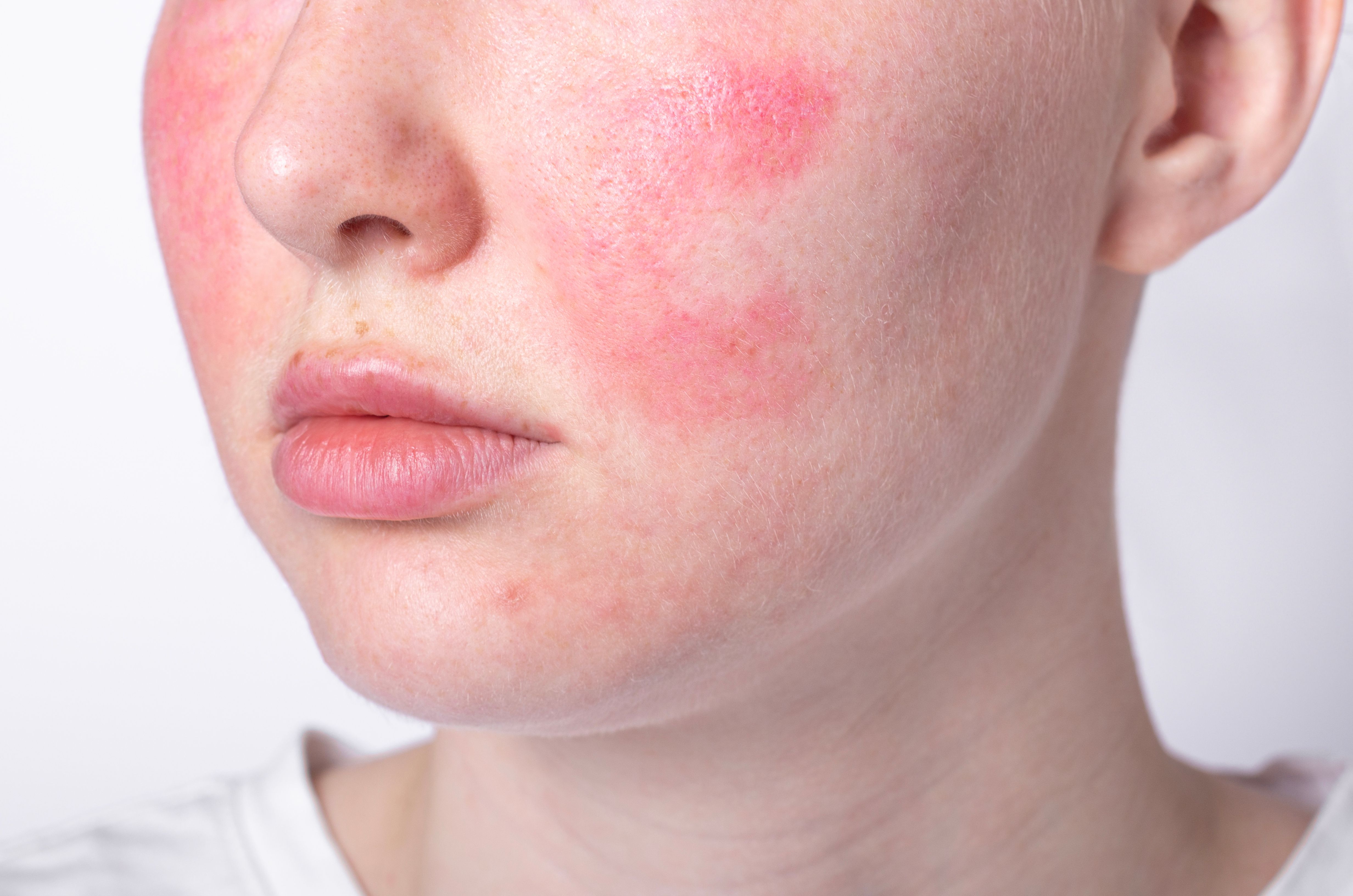- Acne
- Actinic Keratosis
- Aesthetics
- Alopecia
- Atopic Dermatitis
- Buy-and-Bill
- COVID-19
- Case-Based Roundtable
- Chronic Hand Eczema
- Chronic Spontaneous Urticaria
- Drug Watch
- Eczema
- General Dermatology
- Hidradenitis Suppurativa
- Melasma
- NP and PA
- Pediatric Dermatology
- Pigmentary Disorders
- Practice Management
- Precision Medicine and Biologics
- Prurigo Nodularis
- Psoriasis
- Psoriatic Arthritis
- Rare Disease
- Rosacea
- Skin Cancer
- Vitiligo
- Wound Care
Article
Mesoderm Therapy, Compound Glycyrrhizin Improves Rosacea and Patient Satisfaction
Author(s):
Researchers investigated the effects of combination mesoderm therapy and compound glycyrrhizin injections in patients with rosacea.
Combining mesoderm therapy and routine compound glycyrrhizin injections, researchers found noticeable improvements in patients’ symptoms of rosacea, as well as their overall satisfaction.
iso100production/AdobeStock

In a recent study,1 researchers sought to determine the efficacy of combination therapy using compound glycyrrhizin via mesoderm therapy, with the intention of evaluating the treatment’s therapeutic and aesthetic effects, as well as its impact on patient quality of life.
A total of 116 patients presenting with rosacea were included in the study. All patients were required to meet diagnostic criteria for rosacea, with at least 1 identifying diagnostic phenotype and 2 or more major phenotypes, including fixed mid-face erythema, erythema distribution, periodic aggravation, hypertrophic manifestations, flushing, papules and/or pustules, telangiectasia, and ocular manifestations. Furthermore, they were also required to be ages 18 years or older, have either erythematocapillary or papule-pustular- type rosacea, give informed consent to treatment, agree to receive regular treatment and participate in a follow-up, and not have a history of other non-rosacea skin diseases in the treatment area.
Patients with systemic, neurological, or psychiatric diseases; viral, bacterial, or fungal infections of the face; seborrheic dermatitis; facial disseminated lupus; 3 month application of glucocorticoids or immunomodulators; or who were pregnant or lactating, were excluded from participation.
Upon inclusion in the study, researchers randomly assigned participants to either a control group or a research group. Members of the control group (n=58) had a topical metronidazole clindamycin liniment applied in the mornings and evenings for 8 weeks, while members of the research group (n=58) were treated with mesoderm therapy and a compound glycyrrhizin injection once per week for 8 weeks.
Throughout the duration of the study, researchers collected relevant data including gender, age, duration of illness, classification of illness (capillary dilated or papulopustular), and clinical symptom scoring of erythema, flushing, telangiectasia, and papulopustules.
Before treatment and in a follow-up visit after the full 8 week period, researchers took photographs of patients’ facial regions for examination. They sought endpoints including a reduction in symptoms, rosacea standard grading system score improvements, and improvements to skin transepidermal water loss (TEWL), stratum corneum water content, and dermatology life quality index (DLQI) scoring.
As a result of the study, researchers found that patients in the group receiving combination mesoderm and compound glycyrrhizin injection therapy experienced more statistically significant reductions in erythema, flushing, telangiectasis, and papulopustule counts from baseline to conclusion when compared to members of the control group.
Researchers also evaluated participants for overall clinical effectiveness, using before and after treatment photos to determine whether a patient fell into 1 of 4 effect categories: recovery, effectual, effective, or ineffective. Disease recovery and treatment effectiveness were higher in the research group than in the control group.
Both study groups experienced decreases in TEWL and increases in stratum corneum water content. However, these changes were more significant in the research group. Both groups also experienced improvements in DLQI score; however, degree of improvement and overall improvement was more significant among patients in the research group.
“In conclusion, our data showed that the use of mesoderm therapy combined with compound glycyrrhizic acid had a therapeutic effect on facial rosacea and improved patient satisfaction,” study authors wrote. “Our study only reveals the adjunctive effect of mesoderm introduction of compound glycyrrhizin injection treatment for the treatment of rosacea. However, the biological mechanism by which mesoderm introduction of compound glycyrrhizin injection treatment improves skin inflammation remains unclear. We plan to further study the regulation mechanism of mesoderm introduction of compound glycyrrhizin injection treatment on skin inflammation in future research.”
Reference
- Li S, Zhao X, Chen Y, Liu J. Therapeutic effects of mesoderm introduction of compound glycyrrhizin injection on the treatment of rosacea. Skin Res Technol. 2023;29(5). doi:10.1111/srt.13328
Newsletter
Like what you’re reading? Subscribe to Dermatology Times for weekly updates on therapies, innovations, and real-world practice tips.














